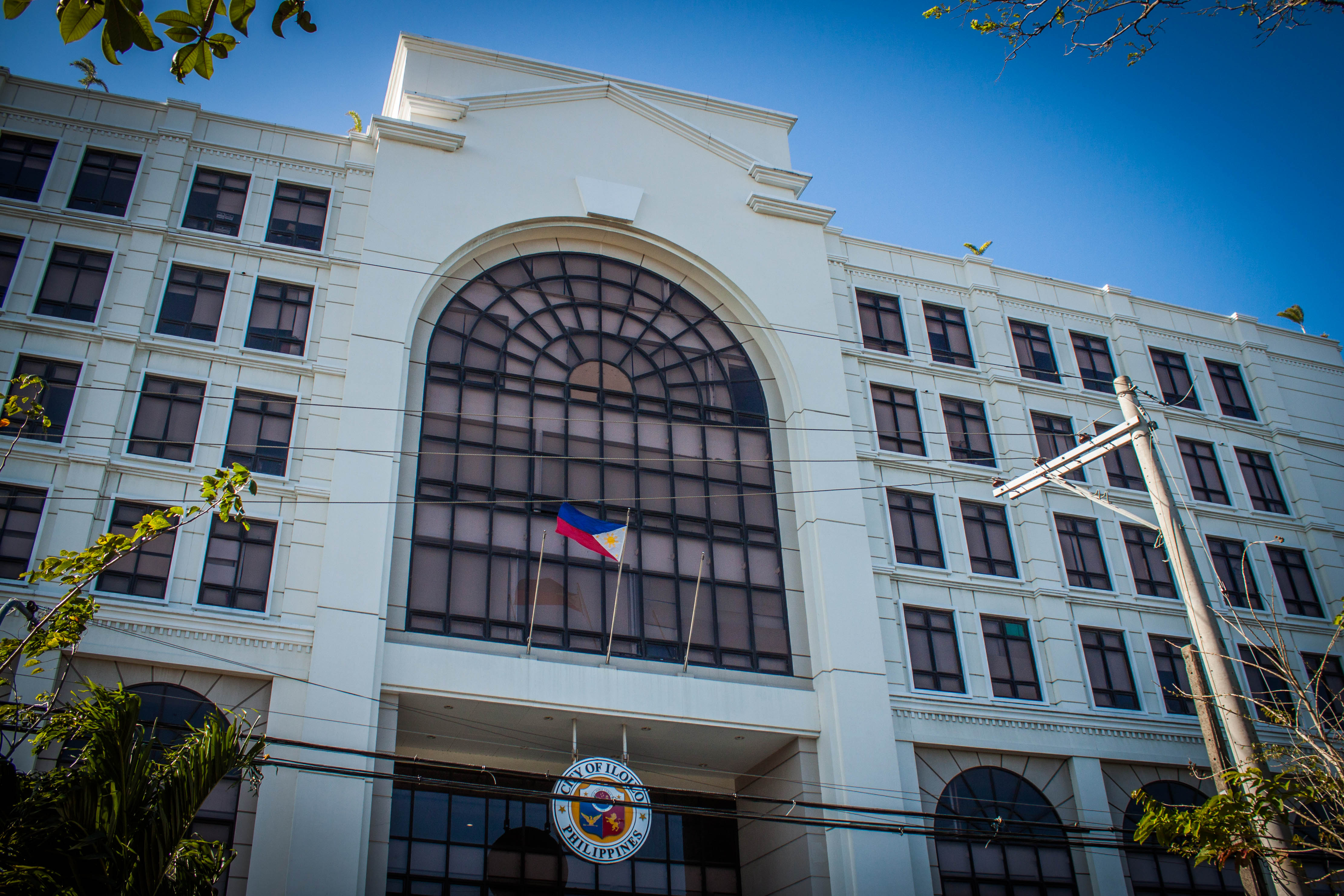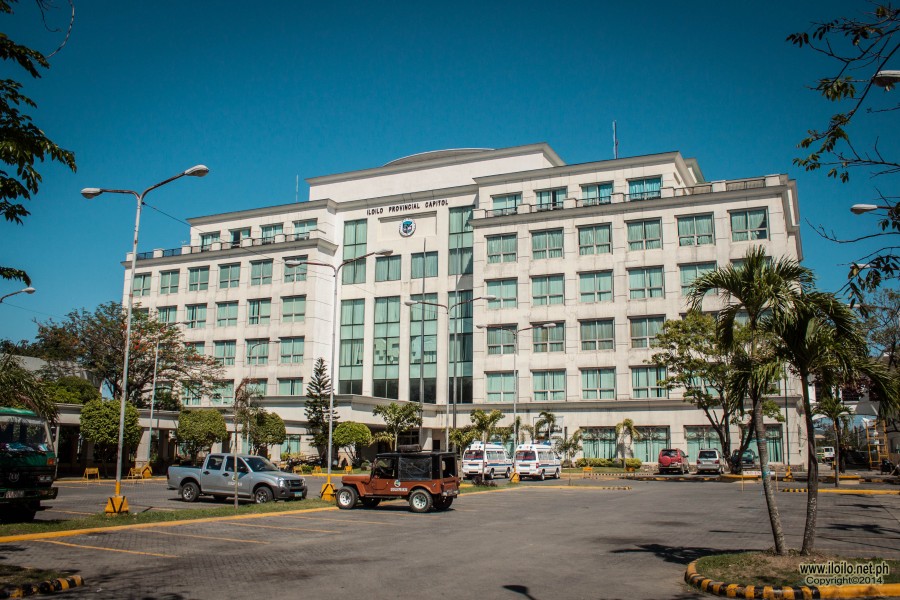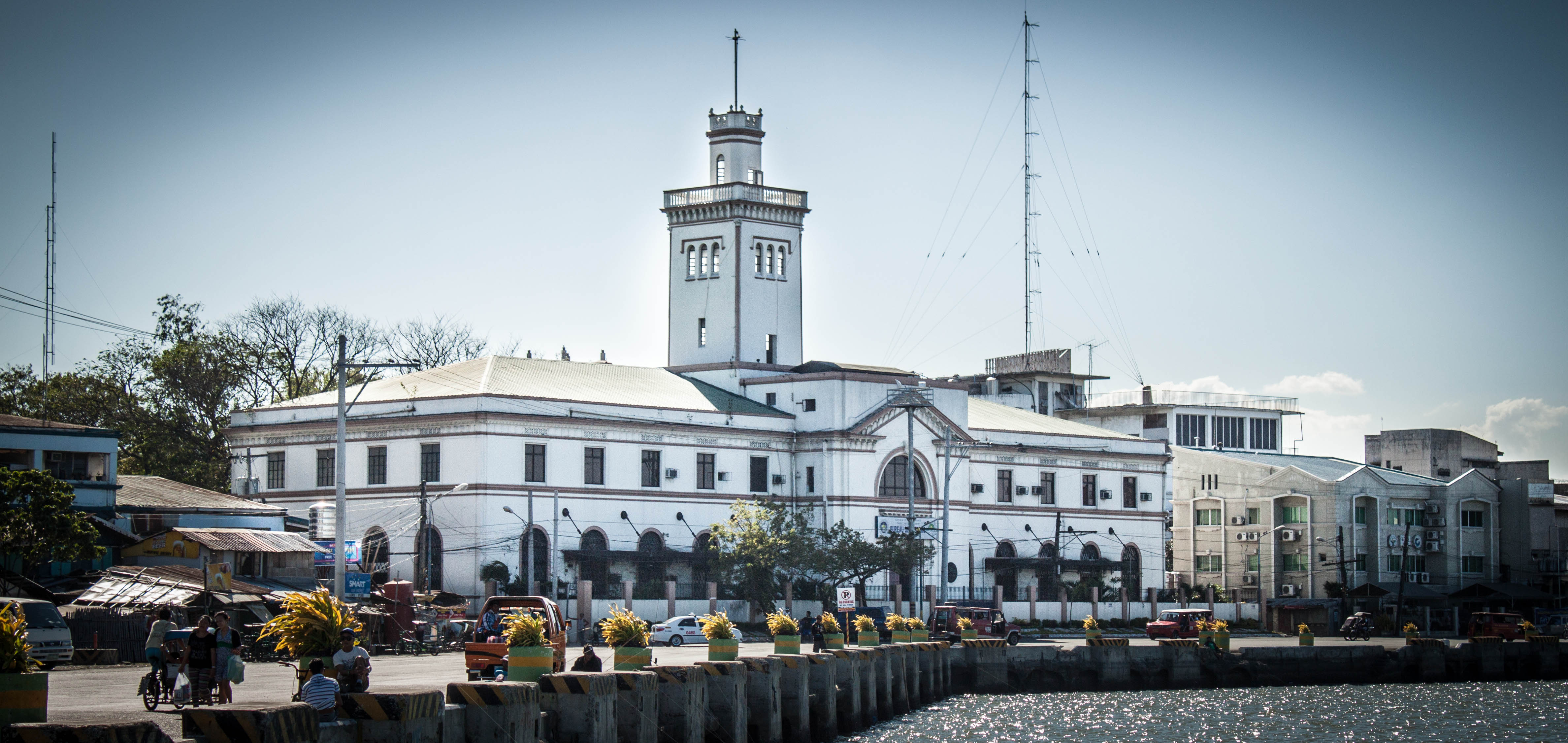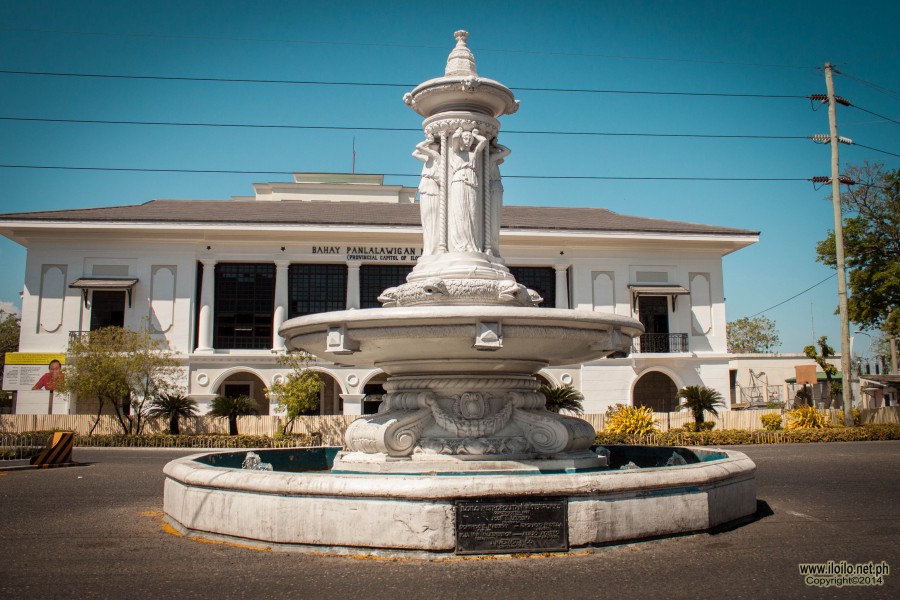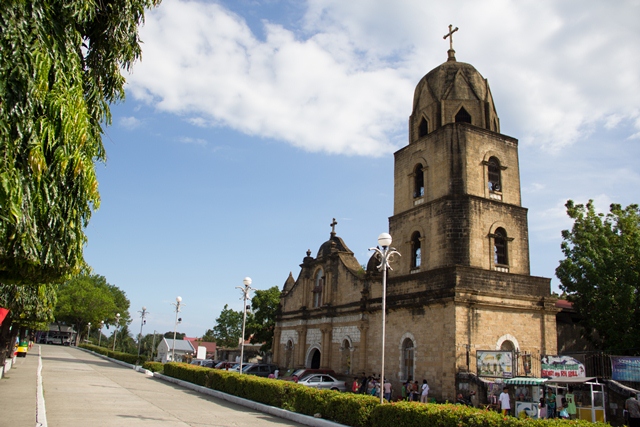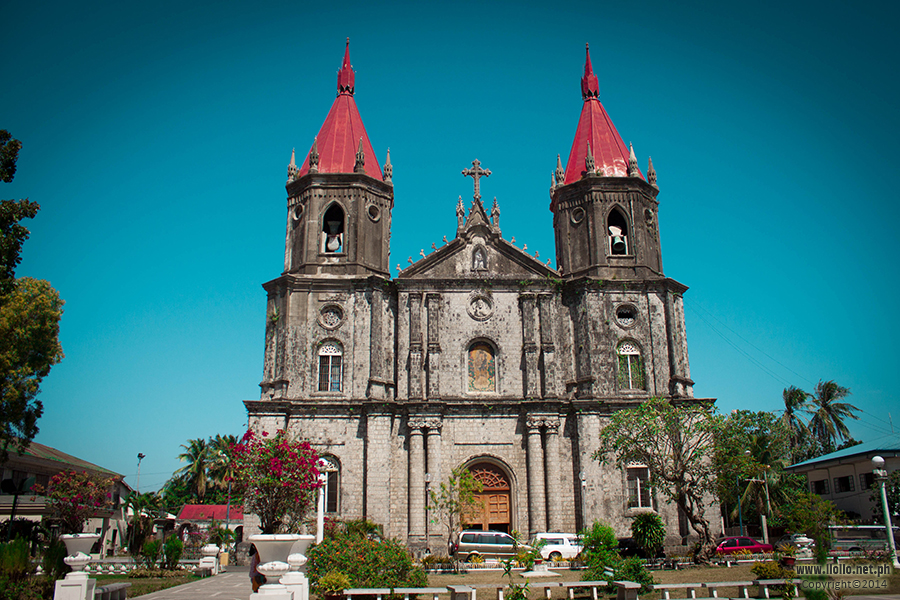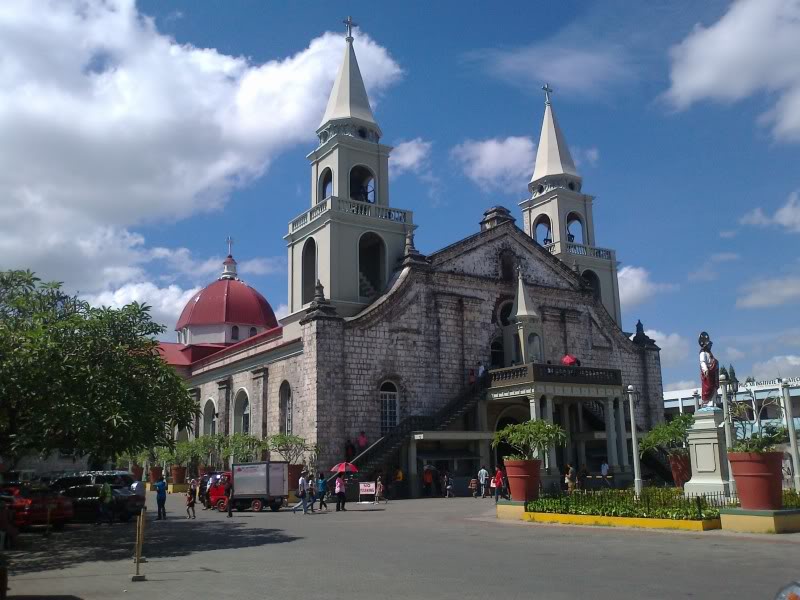Brief History
A. Origin of Name
The name “Iloilo City” was derived from “irong-irong”, a reference to the native word “irong” which means “nose”. The name took after the nose-like configuration of the main settlement area during the pre-Spanish period as so shaped by the Iloilo River. Chinese traders who frequent the area and who mispronounce the “r” sounds with “l” sounds, soon popularized the term “ilong-ilong” which later evolved into the current name Iloilo Arial 9.5 The name is said to have also evolved from a local fish of the same name which was indigenous to the place and which was a staple in the early inhabitants’ daily meals. Iloilo City was also referred to as the “Most Loyal and Noble City” or “La Muy Leal Y Noble Ciuded de Iloilo” in Spanish. This is an inscription in the Coat of Arms from the Royal Decree of 1896 in recognition of the local people’s loyalty to the Spanish crown.
B. Key Historical Events
1560-1590
– Spaniards Mateo Del Saz and Juan de la Isla set foot in Panay.
– The City became the source of food supplies of Cebu during Spanish Colonial period.
– Oton-Arevalo area became the nucleus of Spanish settlement headed by Miguel Lopez de Legazpi.
– Luis de la Haya came twice to Panay and piloted the frigate Espiritu Santo, accompanied by thirty others
and the Agustinian Fr. Martin de Rada who preached the gospel to the natives along the Araut River..
– Legazpi wrote the Viceroy of Mexico that the new settlement in Panay was chosen as a more suitable
site, upon his return from Mexico.
– Legazpi transferred to Manila, leaving in Panay some people to build a gallery of soldiers.
– Francisco de Sande, governor-general of the Islands, reported the work in progress at Oton.
– The town called Villa, founded by Gonzalo Ronquillo de Penalosa, third governor-general of the
Philippines.
– The residence of the alcalde mayor (provincial governor) was transferred to the newly created Villa
de Arevalo.
– The former site in Arevalo was located in what is presently called Santa Cruz.
– Forty Spaniards, twenty encomenderos and twenty soldiers, were settled in Arevalo.
1620-1650
– The chaplaincy made by Don Alfonso Fajardo was turned over the Jesuits, who built a wooden church in
Estanzuela, by Juan Nini de Tavora. – Pedro Murillo visited the fortress and judged it to be a very good
fortress with strong bulwarks, heavy artillery, ammunitions, and strorerooms over a tongue of water which
was not good when the waves beat against it.
– Trading of tobaccos and textiles were started by Panayanos.
– The alcalde mayor resided in Iloilo.
– Gov. Gen. Hurtado de Corcuera issued a decree in his expedition against Sultan Kudarat , asking the people
of Arevalo and the Chineseof Parian (Molo) to move to Punta.
– Few Spaniards who remained in Arevalo were asked by Gov. Gen. Alfonso Fajardo to move to Iloilo.
1650-1680
– Sugar was the most sufficient resource of the Island during that time.
– Rice was distributed to Iloilo from Panay.
– After some conflicts with the parish priest of Arevalo, the church was given to the parish of Parian (Molo).
1680-1740
– Economic transformation took over the entire region and weaving became the primary livelihood in Iloilo.
– Two alcaldes mayors or provincial governors governed the two provinces in Panay Island, Province of
Oton and province of Panay.
– Fernando de Valdes Tamon described the Iloilo fortress as a structure made “of stonework, and had an,
partly in the sea and partly on land, on tongue of land within the port itself”.
– The Iloilo fortress lost its importance through the years and was kept to protect the people against the
attacks of the pirates, which infested those regions.
1740-1790
– Tomas de Castro y Andrade was commissioned to repair both the port and the fortress of Iloilo.
– Arevalo became an independent town again after losing its importance.
– The Jesuits ministered to Molo and all the people living along Molo to Punta when they were expelled
from the Islands by order of Carloss III.
– The Dominicans were overseers.
– D. Juan de Figueroa signed the canonical books as the parish priest of Iloilo, Guimaras Island, and
chaplain of the Fortress.
1790-1850
– The capital of the provinces from Cebu to Panay was officially transferred to Iloilo.
– Sugar production increased during the period.
– Filipino Propaganda Movement was initialized with Graciano Lopez Jaena undertaking the Liberal
Revolution.
– The earliest recorded direct foreign exportation from Iloilo port took place when the Brigantine, a
Portuguese ship, loaded some 500 piculs of sibucao (dye wood) for the colony of Macau
– Fr. Francisco Perez helped in developing the textile industry.
– Chinese textiles were imported and accepted locally.
– The French scholar Mallat visited the place and wrote that it was poorly and thinly inhabited.
– Iloilo became the principal seaport of the region and seat of the government of the province.
1850-1870
– Iloilo opened to foreign and non-Spanish commerce and transactions.
– Iloilo port was opened to international trade.
– The city was given the title “La muy leal y noble ciudad de Iloilo”
– Iloilo begun its development.
– The trade of Iloilo increased after it opened, being second to Manila.
– Pope Pius IX created a new diocese through the brief Qui ab Initio with the seat in Jaro separating it
from the one in Cebu.
– Jose Romero identified the presence of establishment that existed at that time such as the Ker & Co. as
he arrived in Iloilo.
– The capitan de barrio of Iloilo was opened by Gov. Manuel Iznart and Andres Arroyo, which was
registered as one of the three houses only established that time.
– The widening of Real Street was approved.
1870-1880
– The town of Iloilo was a grouping of irregular houses of nipa, among which some wooden or stone
houses with tiles for roofing could be seen.
– The house of Mr. Manuel Aldeguer blessed by Bishop Mariano Cuartero. Aldeguer Street was named
after him.
– A traveler from Manila described Iloilo as a prosperous town which, in the near future, would become
one of the leading cities in the Islands.
– Two iron and wooden bridges were constructed during the incumbency of Gov. Enrique Fajardo.
– Permission was granted to Federico Luchsinger to construct a dock in the Iloilo River.
– The same permission was given to Mr. Cirilo Corteza who was allowed to build a warehouse for his
private use.
– The house of Loney and Co. was granted the same permission
1880-1890
– Agricultural experimental station called La Granja established at La Paz.
– The overseas minister Manuel Bacerra promulgated a law establishing the City Hall of Iloilo.
– The Iloilo Ayuntamiento (City Hall) was established.
– There were already some 15,000 inhabitants in Iloilo registered, many of them were laborers coming
from the nearby towns of Molo and Jaro.
– The government of Manila approved the project to widen and improve the town of Iloilo in accordance
with the indicated recommendations of Junta Consultativa, and sanitize the mangroves still existing
within the town limits.
– Gov. Gen. Valerio Weyler sent the Iloilo authorities a circular reminding them of the past provisions
about the houses of nipa within the main cask of the city.
– There had been no repair on streets when Iznart, Real and Progreso were repaired at a cost of 8,000
pesos since these were the perennial problem of the City Hall.
– Spanish entrepreneur Don Jacobo Zobel de Zangronis was permitted to open a transportline that would
connect Iloilo with Molo and Jaro.
– Dr. Jose Rizal, passing through Iloilo in his way from Dapitan to Manila, was much impressed by the
appearance of the city. He wrote: “… The entrance to Iloilo is beautiful. From afar can be seen the white
city set in water, a nymph of galvanized iron, a modern creation, poetic in spirit of its iron uniform… The
liveliness of the Escolta [which he meant Calle Real] pleased me.”
1890-1900
– The city was referred to as the “Queen City of the South”.
– The Plaza de Alfonso XII was converted into a beautiful garden and park with trees, pathways, and a
monument in the middle.
– A small house was established and later on occupied by Bazar Cosmopolita of Isidro de la Rama and
was burnt.
– Real Street, the main and most beautiful street of Iloilo City, was being urbanized day after day as
reported by El Eco de Panay.
– Junta asked for a loan to buy equipment for cleaning the Iloilo’s rivers.
– Don Antonio Domenech was commissioned to make a feasibility study of railway system of the City to
improve its transportation.
1900-1930
– The first Baptist Church known as Jaro Evangelical Church is established.
– The Central Philippine University ministered theological training among local schools.
– The Manila Daily Bulletin cited Iloilo City as “the metropolis of the Visayan Islands, second city
importance in the archipelago and the greatest market for sugar in this part of the world”.
– Philippine Railway Co. in Manila is authorized to connect as railway network to Panay known as
Panay Railways.
– Inception of the Arellano Plan.
– Commercial buildings enhanced the city’s distinction in business and established first-class infrastructure
– Structures are designed in the “feminine, lacy Iloilo wedding-cake style”
1930-1960
– Iloilo gained its cityhood status again after it was reverted into township by the Americans.
– Panay’s largest bus company, Panay Autobus Co. was established.
– Panay was conquered by the Japanese but the economy of Iloilo was still stable.
– The Jaro Plaza was used as an alternative detention area of Japanese Batallions during World War II.
– Transportation networks advanced their linkages throughout Iloilo City.
– The Jaro Belfry was ruined by an earthquake.
– The City’s architecture started to be influenced by International styles.
1960-1980
– The construction of fish port, international sea port and other commercial establishments made the City
the regional center of Western VIsayas.
– Rice was distributed to Iloilo from Panay.
– Iloilo is known for being the Visayan region entry of commerce because of its ports.
1980-2000
– Restoration of old structures that have heritage value was initiated.
– Investment of business establishments increased more.
– The average annual family income percentage increased.
– The Metro Iloilo Development Council composed of the city of Iloilo, and municipalities of Leganes, Pavia,
Oton and San Miguel was conceptualized..
2000-2011
– The Comprehensive Land Use Plan and Zoning Ordinance of Iloilo is approved by the Sangguniang
Panlungsod and HLURB making the plan to be the first approved for the Highly Urbanized City Category
– The rehabilitation, development and sustainability of the Iloilo River is formulated by the Iloilo Business
Club in partnership with the Iloilo City Government, US-AEP, and The Asia Foundation, consolidated by
Mayor Jerry P. Treñas.
– The Jaro Floodway Channel was completed.
– Typhoon Frank damages Iloilo City.
– The Metro Iloilo-Guimaras Economic Development Council was institutionalized through presidential
Executive Order 559 s- 2006
– The Iloilo City 2011-2020 Comprehensive Land Use Plan was prepared
– Five presidential proclamations were issued for the establishment of on-site site upgrading projects for
the urban poor.
– Another Presidential Proclamation was issued turning over the Parola site to the city government of
Iloilo.
– The rehabilitation and development of the Iloilo-Batiano River was intensified under the leadership of
Mayor Jed Patrick Mabilog and Senator Frank Drilon.
– The new Iloilo City Hall is constructed with “green” concepts
– Other major infrastructure projects were initiated during the term of Mayor Jed Mabilog through the help
of Ilonggo Senator Franklin Drilon.
MUNICIPAL PRESIDENTS/MAYORS OF ILOILO CITY
|
Inclusive Date
|
Name
|
Position/ Designation
|
|
1900-1901
|
Hon. Jose N. Gay
|
Municipal President
|
|
1901-1902
|
Hon. Matias Ybiernas
|
Municipal President
|
|
1903-1904
|
Hon. Rosauro Jocson
|
Municipal President
|
|
1904-1905
|
Hon. Juan de Leon
|
Municipal President
|
|
1906-1908
|
Hon. Rosauro Jocson
|
Municipal President
|
|
1909
|
Hon. Rosauro Jocson
|
Municipal President
|
|
1910-1912
|
Hon. Quirino Abeto
|
Municipal President
|
|
1913-1916
|
Hon. Quirino Abeto
|
Municipal President
|
|
1917-1919
|
Hon. Gerardo Hervas
|
Municipal President
|
|
1920-1921
|
Hon. Vicente Ybiernas
|
Municipal President
|
|
1921-1922
|
Hon. Vicente Ybiernas
|
Municipal President
|
|
1923-1925
|
Hon. Serapion Torre
|
Municipal President
|
|
1926-1928
|
Hon. Eulogio Garganera
|
Municipal President
|
|
1929-1931
|
Hon. Eulogio Garganera
|
Municipal President
|
|
1932-1934
|
Hon. Leopoldo Ganzon
|
Municipal President
|
|
1935-1936
|
Hon. Eulogio Garganera
|
Municipal President
|
|
1936-1941
|
Hon. Ramon Campos
|
City Mayor (Appointed by virtue of RA 365/ Commonwealth Act # 158
|
|
1941-1944
|
Hon. Vicente Ybiernas
|
City Mayor (Appointed by virtue of RA 365/ Commonwealth Act # 158
|
|
1945
|
Hon. Mariano Benedicto
|
City Mayor (Appointed by virtue of RA 365/ Commonwealth Act # 158
|
|
1945-1947
|
Hon. Fernando Lopez
|
City Mayor (Appointed by virtue of RA 365/ Commonwealth Act # 158
|
|
1947-1949
|
Hon. Vicente Ybiernas
|
City Mayor (Appointed by virtue of RA 365/ Commonwealth Act # 158
|
|
1950-1952
|
Hon. Rafael Jalandoni
|
City Mayor (Appointed by virtue of RA 365/ Commonwealth Act # 158
|
|
1953
|
Hon. Juan Borja
|
City Mayor (Appointed by virtue of RA 365/ Commonwealth Act # 158
|
|
1954
|
Hon. Dominador Jover
|
City Mayor (Appointed by virtue of RA 365/ Commonwealth Act # 158
|
|
1955-1959
|
Hon. Rodolfo T. Ganzon
|
First Elected City Mayor (RA 1209)
|
|
1960-1961
|
Hon. Rodolfo T. Ganzon
|
Elected City Mayor
|
|
1962-1963
|
Hon. Reinerio Ticao
|
Elected City Mayor
|
|
1964-1967
|
Hon. Reinerio Ticao
|
Elected City Mayor
|
|
1968-1971
|
Hon. Reinerio Ticao
|
Elected City Mayor
|
|
1972
|
Hon. Rodolfo T. Ganzon
|
Elected City Mayor
|
|
1972 (Oct.) – 1976 (April)
|
Hon. Francisco Garganera
|
Actg. Mayor by virtue of succession
|
|
1976 (May) – 1979 (April)
|
Hon. T.S. Zafiro Ledesma
|
City Mayor (Appointed)
|
|
1979 (May) – 1986 (March)
|
Hon. Luis C. Herrera
|
City Mayor (Appointed/Elected)
|
|
1986 (April) – 1987 (Nov.)
|
Hon. Rosa O. Caram
|
City Mayor (Appointed)
|
|
1987 (Dec.)- 1988 (Jan.)
|
Hon. Antonio Hechanova
|
City Mayor (Appointed)
|
|
1988 (Feb.) – 1991 (June)
|
Hon. Rodolfo T. Ganzon
|
City Mayor (Elected)
|
|
1991 (July) – 1992 (Mar.)
|
Hon. Mansueto A. Malabor
|
Actg. City Mayor
|
|
1992 (April) – 1992 (June 30)
|
Hon. Jerry P. Treñas
|
City Mayor (By Succession)
|
|
1992 (June 30) PM – 1995 (June 30) NN
|
Hon. Masueto A. Malabor
|
City Mayor ( Elected)
|
|
1995 (June 30) PM – 1998 (June 30)NN
|
Hon. Mansueto A. Malabor
|
City Mayor (Elected)
|
|
1998 (June 30)PM – 2001 (June 30)NN
|
Hon. Mansueto A. Malabor
|
City Mayor (Elected
|
|
2001 (June 30) PM- 2004 (June 30)NN
|
Hon. Jerry P. Treñas
|
City Mayor (Elected)
|
|
2004 (June 30)PM – 2007 (June 30)NN
|
Hon. Jerry P. Treñas
|
City Mayor (Elected)
|
|
2007 (Jun3 )PM – 2010 (June 30) NN
|
Hon. Jerry P. Treñas
|
City Mayor (Elected)
|
|
2010 (June 30)PM – Present
|
Hon. Jed Patrick E. Mabilog
|
City Mayor (Elected
|
History of Urban Growth of Iloilo City
Pre-Spanish Period
As with other civilizations, Filipino settlements began along bodies of water. In Iloilo, the typical dwelling was the hut made of bamboo and grass or palm, which lined up along the coasts or the banks of Jaro, Iloilo and Batiano Rivers. Rich landscape of forests, ricefields, mountains or brush and bamboo thicket provided the natives with materials for clothing, shelter and tools. The simple ways of Ilonggos were reflected in the lack of public buildings or places of worship.
Spanish Period
Under Spanish colonization the early type of dispersed settlement called barangays evolved into towns (pueblos) and provinces (alcaldias). Parish churches, beside the nearby town hall (casa tribunal) and town plaza, became the heart of town plans. From the town center, residences filled up the streets which radiated in a grid-iron pattern. Today, the town plaza remains a center of public and religious celebrations.
The seat of government was first set up along the coastlines of Arevalo, which was always under the threat of Muslim or Dutch pirates. Political survival prompted the Spaniards to transfer the seat to Ogtong (now Oton) and eventually near the mouth of Iloilo River (now Fort San Pedro). Since its establishment, a radial road network which radiates from the fort is still being used today.
American Period
In Iloilo, the American Period brought about further economic development through road networks. The British cannot only be credited for strengthening the booming sugar industry. In 1857, Nicholas Loney, the first British vice-consul in Iloilo, was responsible for the kilometer long Road Calle Progreso (now Isidro de Rama Street), which linked the warehouse (bodegas) of sugar with the Iloilo towns. Loney also led the gradual reclamation of the whole western bank of the river and eventual relocation of the business center to the nearby Calle Real (now J.M. Basa Street).
The 1920s witnessed the introduction of the working class districts (barrio obreros) to accommodate the low-income labor sector. Barrio Obrero was established in Lapaz to the north of the Iloilo River’s mouth. During this time, Art Nouveau and Neo-Colonial architecture also flourished in the city’s downtown. Typical designs were arcaded ground floors set back in near straight alignments.
Although Manila was the focus of planning then, Iloilo was elevated as chartered city on 16 July 1937. During this time, Ilonggos, who received American grants to study architecture abroad, returned and brought American architecture to their homes. Usual Commonwealth elements were the eagle, scroll and olive leaves.
By the end of World War II, Iloilo’s blooming economy was in ruins. The decline in sugar economy and exodus of people and investors to other cities such as Bacolod and Cebu, led further to its economic demise.
Iloilo gradually recovered as the planning focus was on reconstructing and reviving war-torn Philippines. In 1959, Iloilo City joined other chartered cities in implementing the urban planning strategies and policies of the National Planning Commission.
Modern Period
The next three decades saw the moderate growth of Iloilo City with the establishment of fish ports, an international seaport, and other commercial firms. Iloilo City also became the Regional Center of Western Visayas.
In 1977, a Comprehensive Urban Development Plan for Iloilo City was approved and was adopted by the Sangguniang Panlungsod. The Land Use Plan and Zoning Ordinance was the implementing tool. However, the 1977 Plan was unable to cope with the demands of rapid urbanization.
By the end of 1993, a multi-sectoral group prepared the 1994-2010 Comprehensive Development Plan of Iloilo City to amend the old plan and address the present and future challenges of urban development. The plan, however, was not carried pending the approval of the Housing and Land Use Regulatory Board (HLURB).
The word “Iloilo City” came from the shape of the city, cut by the river which looks like the shape of a nose, “Irong-Irong”, nose-like, later became Iloilo. Other accounts point the origin of the name to a fish.
Monicker: “Most Loyal and Noble City” or “La Muy Leal Y Noble Ciuded de Iloilo” in Spanish. This is an inscription in the Coat of Arms from the Royal Decree of 1896 in recognition of the people’s loyalty to the Spanish crown.
A replica of the Spanish Crown architechtural structure can be seen in the Arevalo District of the City.
Zip code: 5000
Area Code: 33
Land Area: 78.34 square kilometers
Population: 442,511 (projected SEP 2010)
Population Density: 5,649 persons per square kilometer (Updated as of 2011 projection)
Number of Households: 85,518 (2007 Census)
Population Growth: 1.86% (2007 Cesus)
Coastline Area: 21.3 kilometers
Riverfront: 113 kilometers
Literacy Rate: 92.8 %
Lingua franca: Filipino, Hiligaynon, Kinaray-a, English
Economic activity:
Service sector : 82%
Industry : 14%
Agriculture : 4%
Climate
Iloilo City’s climate is moonsonal and has two (2) pronounced seasons namely, the dry and wet seasons.
The following are the tables of the 2009 Meteorological Profile, Climatological Data and the Tropical Cyclones.
source: SOCIO-ECONOMIC PROFILE 2011, City Planning and Development Office, Iloilo City

